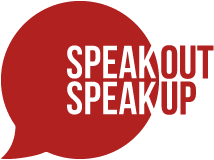All companies have narratives—mission statements, principles, and core values— that communicate the identity and purpose of the firm to its stakeholders, especially the employees. A story that defines a firm’s purpose, mission, and values can empower managers to search for and identify new opportunities that fit within the company’s moral framework and handle unforeseen crises.
A senior executive participating in an ethics seminar claimed that his company had for many years a great reputation for ethical business practice—one that was firmly woven into the company’s history. When evidence of some financial malfeasance began to appear at the firm, senior managers were not prepared and did not react as quickly as they could have because they were so accustomed to resting upon the company’s history and corresponding narrative. “No one believed something like this could happen here,” the executive said.
Background narratives provide us with frameworks for understanding the world and our place in it. We are not simply the characters in these narratives; we are also their authors. It is important to recognize that we have a role both in making adjustments to our narrative frameworks and in trying to connect our stories to those within other groups. When we mistakenly view our narrative frameworks as static, we not only risk moral laziness, but we also may miss opportunities to reshape in very positive ways our narratives and roles therein. Narratives can confuse, bias, and invent what we take to be data, facts, or even truths.
Managers may confuse reality with what they want it to be and individuals may lack a sense of the
variety of possibilities and the moral consequences of their decisions as well as the ability to imagine a wider range of possible issues, consequences, and solutions. Sometimes managers and institutions become trapped in their historical framework or a framework perpetuated by their organization, corporate culture, or tradition. Even if managers are only vaguely aware of their particular framework, it can drive their decision making to preclude taking into account moral concerns. A powerful and pervasive framework sometimes allows or even encourages managers to overestimate their powers and abilities.
Any leader who thinks her organization is immune to moral and ethical problems stands upon thin ground. Moral disasters can happen even if there is no intent to do harm by any of the parties involved—a fact that is illuminated by the Challenger case. Roles carry with them expectations, rights and duties, norms, and ideals that are either explicit or implicit. Sometimes these rights and duties are legally or contractually defined. Most people adhere to these expectations most of the time, which permits an amount of predictability to human behavior.
Ordinarily there are good moral reasons for acting according to a role’s demands or ideals. There are, however, cases where roles themselves can become morally problematic. In the Challenger disaster, all people involved were well meaning and acting within the normative, contractual expectations of their roles. Despite their good intentions and concerns about the risk associated with O-rings, the engineers at Morton Thiokol who protested the launch internally did not “blow the whistle” to top management at Thiokol or NASA before the launch took place.Perhaps it is because the engineers viewed their role only as providers of data, lacking power as final decision makers and solely with respect to their own narrative. Social roles provide a degree of predictability to human behavior within an organization, but a rigid understanding of roles limits habits of behavior in ways that fail to empower employees and managers to deal effectively with unanticipated situations or crises.
Many managers conceive of good leadership as being primarily about motivating employees to do what they want them to do. Sometimes obedience to authority is part of the problem. Obedience on the part of middle managers enabled the $11 billion fraud at WorldCom, the largest in corporate history. Leaders often fail to recognize that employee obedience usually has little to do with their own brilliance, values, experience, or ability to lead—it is primarily due to their position of recognized authority. The truth is that employee obedience can sometimes destroy a company. At Enron, WorldCom and LeisureNet employees ordered to “hit the numbers” did so—even at the expense of the truth and ultimately—at the expense of their firms and all of their stakeholders.
Creative moral imagination helps us to project beyond the constraints of particular narrative frameworks, roles, or biases. While strong organizational cultures are a good defense against most ethical failings, the Achilles heel is their susceptibility to what psychologists term groupthink—“a strong concurrence-seeking tendency that interferes with effective decision making.” In particular, groupthink fosters the illusion that an organization lacks certain vulnerabilities or is inherently more moral than others.
The morally imaginative step of giving one’s critics a voice—and a very public soapbox—helps to break the enchantment of invincible superiority, not only restoring trust in an organisation, but also helping to ensure that future problems would not go unchecked.
Moral decision making is a dynamic process, one which calls for an imaginative response by managers encountering new situations that do not easily fit within an existing narrative or framework. Moral imagination entails an ability to consider a situation from the perspectives of various stakeholders—a facility that can help managers avoid the ethical trap of confusing reality with what they want it to be. Leaders will better prepare their organizations for the unanticipated situations they will inevitably face by expanding the notion of managerial responsibility to include moral imagination as a cultural practice and value. Moral imagination can be taught and developed inside cubicles as well as in the board room. It should be a key factor in developing the next generation of corporate leaders. While the role and circumstance of corporations differ, most firms would recognize serious benefits from developing and “routinizing” the exercise of moral imagination in the daily work routine of their employees.
Speak a common language
Organizations—particularly large global ones—need to include individuals who understand and can translate multiple frameworks and narratives.
More Ethic of Care less Ethic of Obedience
Creating a culture of pushback—‘challenge meetings’—can be an effective method for leaders. This does not happen organically; it must be built in from the top of the organization. A tone must exist at the top that actively seeks out and listens to internal voices of dissent
Avoid Blind Spots
It is precisely when it seems there is no good option among our available choices that we should think outside our current role and framework and imagine what a good choice or a better story might look like.
Cultures of Diversity and Dissent
Whenever it takes a publicly visible crisis to make a firm sensitive to ethics issues within a company, it must be viewed as a cultural and management failure. Reaping the benefits of diversity with regard to race, gender, cultural background, and personality/modes of thinking and expressing one’s self is of great value.
Seek broad Council
Consulting other leaders outside the firm is a great benefit to those in leadership positions. It provides insight and an opportunity for conversation about difficult ethical issues.


